How to warp your loom faster and more enjoyably
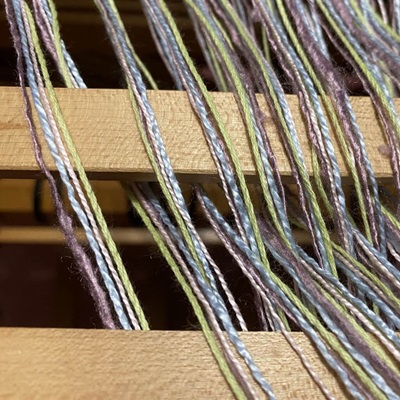
I could easily teach an entire class just on winding a warp. It seems like such a simple thing yet there are so many hints and tricks that make it far more efficient and enjoyable – and, more importantly, that make dressing your loom easier and more successful.
Winding a folded warp to mirror stripes
Note: This post was originally posted in the Handweaving Academy’s Weaver’s Toolbox, which is chock full of tips and tricks! Do you ever avoid a project with lots of stripes because of all the color changes? I know I have! Unless you employ clever tricks (and boy, do I have tricks), changing colours is time […]
How to reduce the bulk of hems

Hems that are woven in same weft yarn as the body of the project can be bulky once turned under twice to hide the raw edge. Here are some suggestions for reducing that bulk: Use a finer weft in a matching color for the entire hem For example, if the body of your item is […]
Is plain weave possible on this threading?
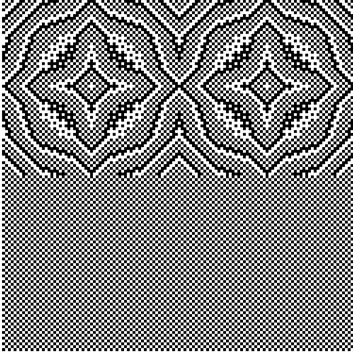
One question that comes up from time to time is how to weave plain weave on a given threading. Contrary to popular belief, weaving plain weave is NOT simply a matter of lifting first all the even shafts and then all the odd shafts. If a threading alternates odd and even shafts throughout, then even […]
How I tie on a warp: Janet’s version
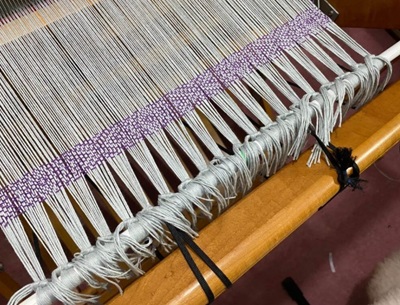
Last week Kathy described her process for tying a warp onto the front apron rod. This week, I’ll tell you how and why I do things a little differently. To be clear: both methods work! Neither one of us is trying to convince you our way is better! Our goal is to just show you […]
Figuring out EPI from an irregular sleying pattern
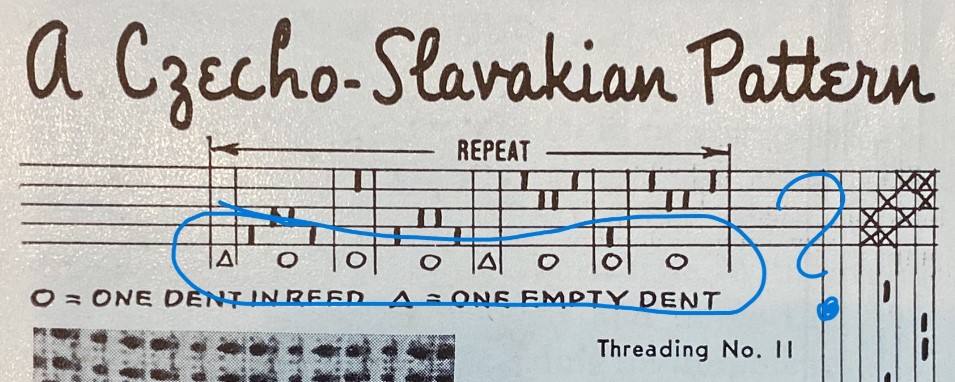
When you’re sleying every dent in the reed with the same number of ends, it’s pretty easy to tell how many ends per inch you’ll get: you just multiply the number of ends per dent by the number of dents per inch and presto, there’s your answer. For example: 1 end per dent x 12 […]
How to fix a loop at the selvage
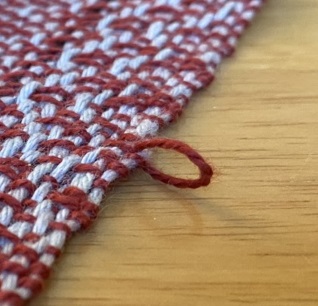
Have you ever been weaving along and realized that your weft thread caught on something a while back and you’ve got a big loop hanging out the side of your fabric? Or noticed that several inches back you didn’t set the weft quite right at the selvage and you’ve got a tiny loop sticking out? […]
What toppings do you like on your tie-up pizza?

A tie-up is like a pizza: the bigger it is, the more slices you can chop it into. A tie-up is also like a pizza in that you can put different toppings on each slice. (I know that sounds like a stretch, but bear with me.) In the What is Twill? course, we discussed that […]
How to choose the best reed (and sleying order) when the perfect reed is not available
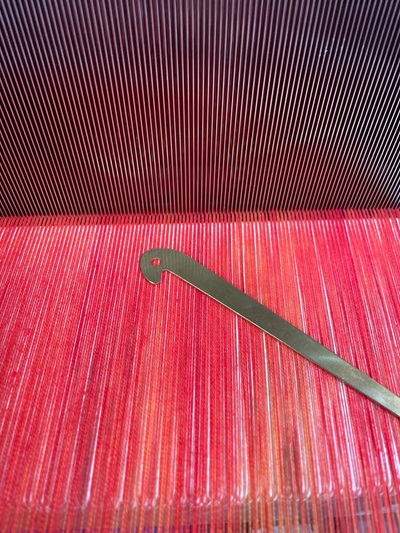
Many weavers have a limited number of reeds available to them. If you have a 12 dent reed, and the project you are working on has a 24 epi Sett, you simply sley 2 ends in each dent. Easy peasy! What happens if you DON’T have the perfect reed available? Example 1: Anne Hiemstra ran […]
Fix a wrong sett – WITHOUT resleying
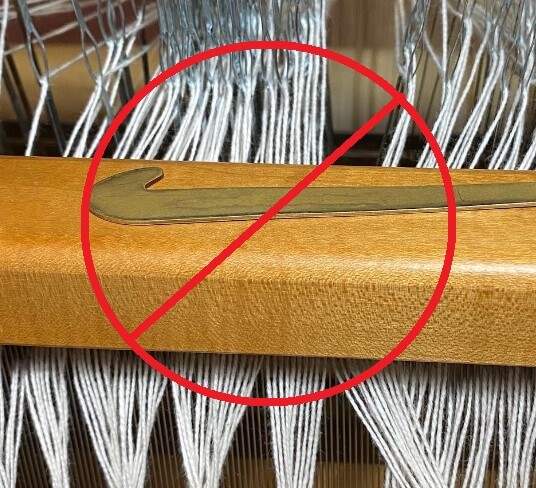
As you probably know, sett is critical to getting your project right: if it’s too open, the weft beats in too much and covers the warp. If it’s too close, the fabric can wind up stiff and unsuitable for its purpose. When working with a new yarn or a new structure, we usually make a […]
